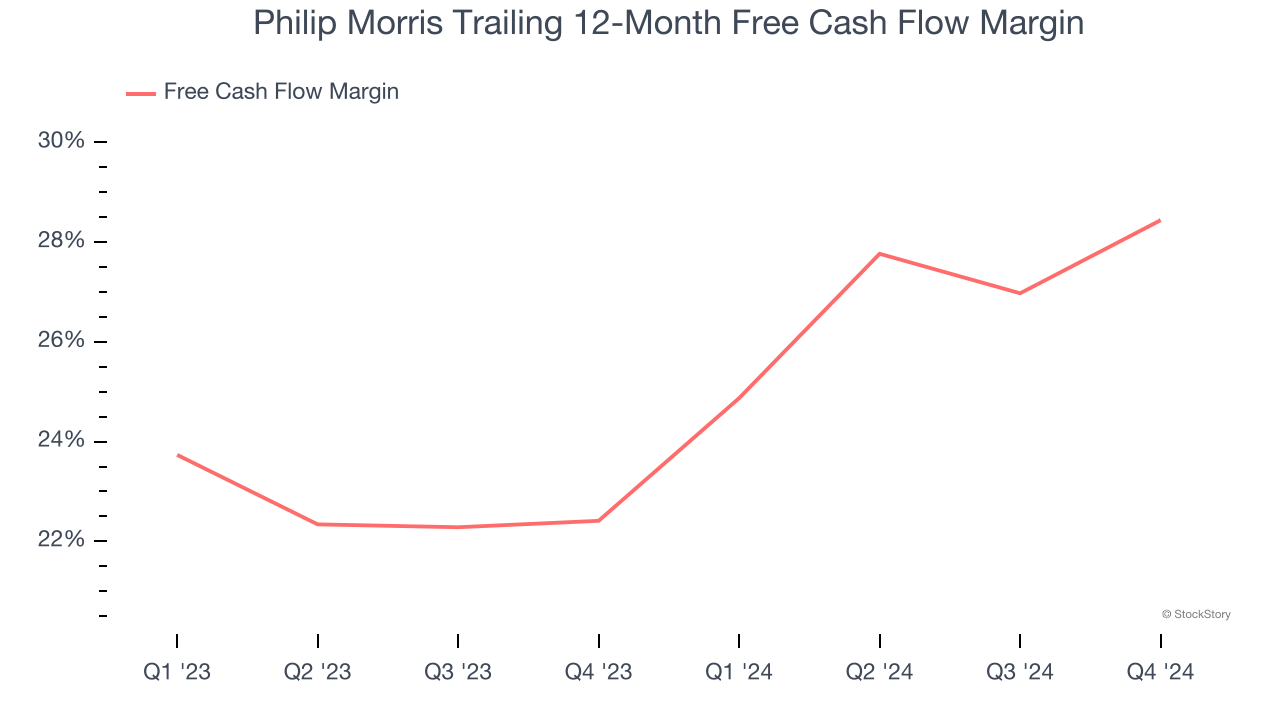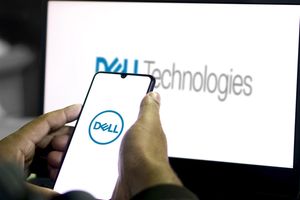
Tobacco company Philip Morris International (NYSE: PM) beat Wall Street’s revenue expectations in Q1 CY2025, with sales up 5.8% year on year to $9.30 billion. Its non-GAAP profit of $1.69 per share was 4.8% above analysts’ consensus estimates.
Is now the time to buy Philip Morris? Find out by accessing our full research report, it’s free.
Philip Morris (PM) Q1 CY2025 Highlights:
- Revenue: $9.30 billion vs analyst estimates of $9.06 billion (5.8% year-on-year growth, 2.6% beat)
- Adjusted EPS: $1.69 vs analyst estimates of $1.61 (4.8% beat)
- Management raised its full-year Adjusted EPS guidance to $7.43 at the midpoint, a 4.5% increase
- Operating Margin: 38.1%, up from 34.6% in the same quarter last year
- Sales Volumes were up 3.9% year on year
- Market Capitalization: $255.4 billion
"We achieved exceptionally strong performance in the first quarter, with continued volume growth supporting an excellent top-line performance and very strong margin expansion," said Jacek Olczak, Chief Executive Officer.
Company Overview
Founded in 1847, Philip Morris International (NYSE: PM) manufactures and sells a wide range of tobacco and nicotine-containing products, including cigarettes, heated tobacco products, and oral nicotine pouches.
Beverages, Alcohol, and Tobacco
These companies' performance is influenced by brand strength, marketing strategies, and shifts in consumer preferences. Changing consumption patterns are particularly relevant and can be seen in the rise of cannabis, craft beer, and vaping or the steady decline of soda and cigarettes. Companies that spend on innovation to meet consumers where they are with regards to trends can reap huge demand benefits while those who ignore trends can see stagnant volumes. Finally, with the advent of the social media, the cost of starting a brand from scratch is much lower, meaning that new entrants can chip away at the market shares of established players.
Sales Growth
A company’s long-term sales performance is one signal of its overall quality. Any business can put up a good quarter or two, but the best consistently grow over the long haul.
With $38.39 billion in revenue over the past 12 months, Philip Morris is one of the most widely recognized consumer staples companies. Its influence over consumers gives it negotiating leverage with distributors, enabling it to pick and choose where it sells its products (a luxury many don’t have). However, its scale is a double-edged sword because there are only so many big store chains to sell into, making it harder to find incremental growth. To expand meaningfully, Philip Morris likely needs to tweak its prices, innovate with new products, or enter new markets.
As you can see below, Philip Morris’s 6.7% annualized revenue growth over the last three years was mediocre, but to its credit, consumers bought more of its products.

This quarter, Philip Morris reported year-on-year revenue growth of 5.8%, and its $9.30 billion of revenue exceeded Wall Street’s estimates by 2.6%.
Looking ahead, sell-side analysts expect revenue to grow 7.6% over the next 12 months, similar to its three-year rate. This projection is above average for the sector and suggests its newer products will help support its historical top-line performance.
Today’s young investors won’t have read the timeless lessons in Gorilla Game: Picking Winners In High Technology because it was written more than 20 years ago when Microsoft and Apple were first establishing their supremacy. But if we apply the same principles, then enterprise software stocks leveraging their own generative AI capabilities may well be the Gorillas of the future. So, in that spirit, we are excited to present our Special Free Report on a profitable, fast-growing enterprise software stock that is already riding the automation wave and looking to catch the generative AI next.
Cash Is King
Free cash flow isn't a prominently featured metric in company financials and earnings releases, but we think it's telling because it accounts for all operating and capital expenses, making it tough to manipulate. Cash is king.
Philip Morris has shown terrific cash profitability, driven by its lucrative business model that enables it to reinvest, return capital to investors, and stay ahead of the competition. The company’s free cash flow margin was among the best in the consumer staples sector, averaging an eye-popping 30.6% over the last two years.

Key Takeaways from Philip Morris’s Q1 Results
It was encouraging to see Philip Morris beat analysts’ revenue expectations this quarter. We were also happy its gross margin outperformed Wall Street’s estimates, leading to an EPS beat. Overall, this quarter had a lot of key positives. The stock traded up 4.7% to $171.75 immediately following the results.
Philip Morris may have had a good quarter, but does that mean you should invest right now? If you’re making that decision, you should consider the bigger picture of valuation, business qualities, as well as the latest earnings. We cover that in our actionable full research report which you can read here, it’s free.







